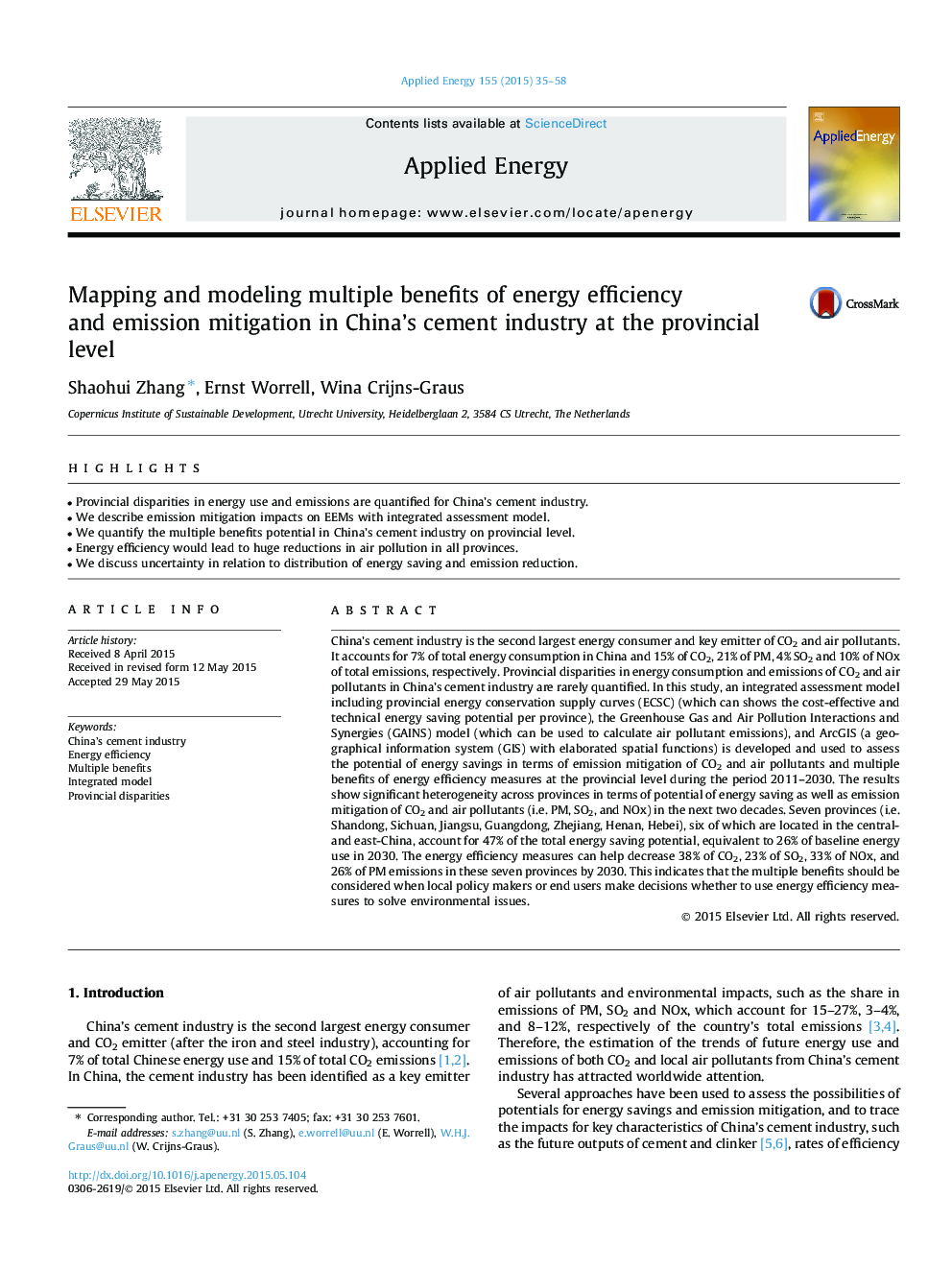| کد مقاله | کد نشریه | سال انتشار | مقاله انگلیسی | نسخه تمام متن |
|---|---|---|---|---|
| 6686371 | 501874 | 2015 | 24 صفحه PDF | دانلود رایگان |
عنوان انگلیسی مقاله ISI
Mapping and modeling multiple benefits of energy efficiency and emission mitigation in China's cement industry at the provincial level
ترجمه فارسی عنوان
نقشه برداری و مدل سازی مزایای متعدد بهره وری انرژی و کاهش انتشار در صنعت سیمان چین در سطح استان
دانلود مقاله + سفارش ترجمه
دانلود مقاله ISI انگلیسی
رایگان برای ایرانیان
کلمات کلیدی
چین صنعت سیمان، بهره وری انرژی، مزایای چندگانه، مدل یکپارچه، نابرابری های ولایتی،
موضوعات مرتبط
مهندسی و علوم پایه
مهندسی انرژی
مهندسی انرژی و فناوری های برق
چکیده انگلیسی
China's cement industry is the second largest energy consumer and key emitter of CO2 and air pollutants. It accounts for 7% of total energy consumption in China and 15% of CO2, 21% of PM, 4% SO2 and 10% of NOx of total emissions, respectively. Provincial disparities in energy consumption and emissions of CO2 and air pollutants in China's cement industry are rarely quantified. In this study, an integrated assessment model including provincial energy conservation supply curves (ECSC) (which can shows the cost-effective and technical energy saving potential per province), the Greenhouse Gas and Air Pollution Interactions and Synergies (GAINS) model (which can be used to calculate air pollutant emissions), and ArcGIS (a geographical information system (GIS) with elaborated spatial functions) is developed and used to assess the potential of energy savings in terms of emission mitigation of CO2 and air pollutants and multiple benefits of energy efficiency measures at the provincial level during the period 2011-2030. The results show significant heterogeneity across provinces in terms of potential of energy saving as well as emission mitigation of CO2 and air pollutants (i.e. PM, SO2, and NOx) in the next two decades. Seven provinces (i.e. Shandong, Sichuan, Jiangsu, Guangdong, Zhejiang, Henan, Hebei), six of which are located in the central- and east-China, account for 47% of the total energy saving potential, equivalent to 26% of baseline energy use in 2030. The energy efficiency measures can help decrease 38% of CO2, 23% of SO2, 33% of NOx, and 26% of PM emissions in these seven provinces by 2030. This indicates that the multiple benefits should be considered when local policy makers or end users make decisions whether to use energy efficiency measures to solve environmental issues.
ناشر
Database: Elsevier - ScienceDirect (ساینس دایرکت)
Journal: Applied Energy - Volume 155, 1 October 2015, Pages 35-58
Journal: Applied Energy - Volume 155, 1 October 2015, Pages 35-58
نویسندگان
Shaohui Zhang, Ernst Worrell, Wina Crijns-Graus,
